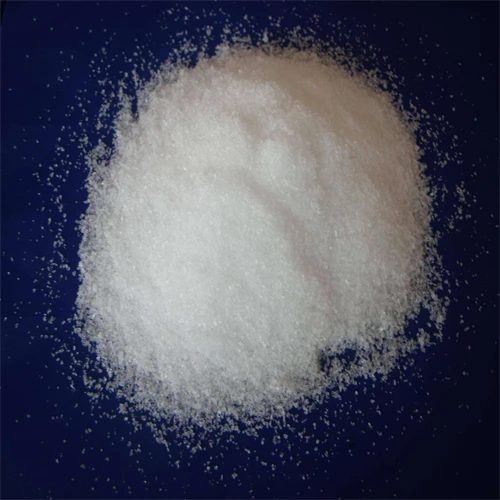Warning: Undefined array key "title" in /home/www/wwwroot/HTML/www.exportstart.com/wp-content/themes/1198/header.php on line 6
Warning: Undefined array key "file" in /home/www/wwwroot/HTML/www.exportstart.com/wp-content/themes/1198/header.php on line 7
Warning: Undefined array key "title" in /home/www/wwwroot/HTML/www.exportstart.com/wp-content/themes/1198/header.php on line 7
Warning: Undefined array key "title" in /home/www/wwwroot/HTML/www.exportstart.com/wp-content/themes/1198/header.php on line 7
- Afrikaans
- Albanian
- Amharic
- Arabic
- Armenian
- Azerbaijani
- Basque
- Belarusian
- Bengali
- Bosnian
- Bulgarian
- Catalan
- Cebuano
- China
- China (Taiwan)
- Corsican
- Croatian
- Czech
- Danish
- Dutch
- English
- Esperanto
- Estonian
- Finnish
- French
- Frisian
- Galician
- Georgian
- German
- Greek
- Gujarati
- Haitian Creole
- hausa
- hawaiian
- Hebrew
- Hindi
- Miao
- Hungarian
- Icelandic
- igbo
- Indonesian
- irish
- Italian
- Japanese
- Javanese
- Kannada
- kazakh
- Khmer
- Rwandese
- Korean
- Kurdish
- Kyrgyz
- Lao
- Latin
- Latvian
- Lithuanian
- Luxembourgish
- Macedonian
- Malgashi
- Malay
- Malayalam
- Maltese
- Maori
- Marathi
- Mongolian
- Myanmar
- Nepali
- Norwegian
- Norwegian
- Occitan
- Pashto
- Persian
- Polish
- Portuguese
- Punjabi
- Romanian
- Russian
- Samoan
- Scottish Gaelic
- Serbian
- Sesotho
- Shona
- Sindhi
- Sinhala
- Slovak
- Slovenian
- Somali
- Spanish
- Sundanese
- Swahili
- Swedish
- Tagalog
- Tajik
- Tamil
- Tatar
- Telugu
- Thai
- Turkish
- Turkmen
- Ukrainian
- Urdu
- Uighur
- Uzbek
- Vietnamese
- Welsh
- Bantu
- Yiddish
- Yoruba
- Zulu
11월 . 05, 2024 05:49 Back to list
'understanding the origin and production process of xanthan ...'
Understanding the Origin and Production Process of Xanthan Gum
Xanthan gum is a polysaccharide that has gained significant attention in various industries due to its unique thickening and stabilizing properties. Derived from the fermentation of glucose or sucrose by the bacterium Xanthomonas campestris, xanthan gum has become a staple in food, pharmaceuticals, and cosmetic products. Understanding its origin and production process is essential to grasping its versatility and functionality.
Origin of Xanthan Gum
The history of xanthan gum dates back to the 1960s when scientists discovered the fermentation capabilities of Xanthomonas campestris. This bacterium is commonly found on cruciferous plants, such as cabbage and broccoli, where it can cause soft rot. When the bacteria multiply, they secrete a viscous polysaccharide that helps them adhere to surfaces and form a protective coating. This natural thickener sparked interest for its potential applications in various industries, leading to extensive research and development.
Xanthan gum's structure is composed of repeating pentasaccharide units, which include glucose, mannose, and glucuronic acid. Its unique molecular arrangement gives xanthan gum its exceptional ability to create viscosity and stability in solutions, making it a highly sought-after ingredient in many formulations.
Production Process of Xanthan Gum
The production of xanthan gum involves several key steps, beginning with the cultivation of Xanthomonas campestris in a controlled environment. This process typically occurs in large fermentation tanks, where the bacterium is provided with a nutrient-rich medium, usually consisting of carbohydrates such as glucose or sucrose, and mineral salts.
1. Fermentation Once the media is prepared, the Xanthomonas campestris culture is inoculated into the fermentation tank. Under optimal conditions, which include controlled temperature, pH, and aeration, the bacteria begin to thrive and multiply rapidly. As they grow, they secrete xanthan gum into the surrounding solution.
'understanding the origin and production process of xanthan ...'

2. Harvesting After a specified fermentation period, usually ranging from 3 to 10 days, the xanthan gum-rich broth is harvested. The broth contains a blend of xanthan gum, residual bacteria, and nutrient sources.
3. Purification The harvested solution undergoes a purification process to isolate the xanthan gum. This is typically achieved through a series of filtration and precipitation steps. The filtration eliminates remaining bacteria and solid matter, while ethanol or isopropanol is often used to precipitate the xanthan gum from the solution.
4. Drying Once precipitated, the xanthan gum is collected, washed, and then dried to remove excess moisture. The drying process is critical as it ensures the stability and shelf life of the final product. The dried xanthan gum can be processed into a powder form, which is more convenient for storage and use in various applications.
5. Quality Control After production, xanthan gum undergoes stringent quality control measures to ensure that it meets industry standards. This includes tests for viscosity, solubility, and purity, ensuring that the final product maintains the desired characteristics for its intended uses.
Applications of Xanthan Gum
Thanks to its exceptional thickening and stabilizing abilities, xanthan gum finds a wide range of applications. In the food industry, it is often used in salad dressings, sauces, and gluten-free baked goods to improve texture and shelf life. In pharmaceuticals and cosmetics, xanthan gum is employed as an emulsifier and stabilizer in creams, lotions, and other formulations.
Conclusion
The origin and production process of xanthan gum highlight the remarkable synergy between nature and biotechnology. From its natural roots in plant pathogens to its place as a multifunctional ingredient in numerous industries, xanthan gum exemplifies how microbial fermentation can yield valuable compounds that enhance our everyday products. As research continues to explore its potential applications, xanthan gum is likely to remain a key player in the realm of food science and beyond.
Latest news
-
Certifications for Vegetarian and Xanthan Gum Vegetarian
NewsJun.17,2025
-
Sustainability Trends Reshaping the SLES N70 Market
NewsJun.17,2025
-
Propylene Glycol Use in Vaccines: Balancing Function and Perception
NewsJun.17,2025
-
Petroleum Jelly in Skincare: Balancing Benefits and Backlash
NewsJun.17,2025
-
Energy Price Volatility and Ripple Effect on Caprolactam Markets
NewsJun.17,2025
-
Spectroscopic Techniques for Adipic Acid Molecular Weight
NewsJun.17,2025

